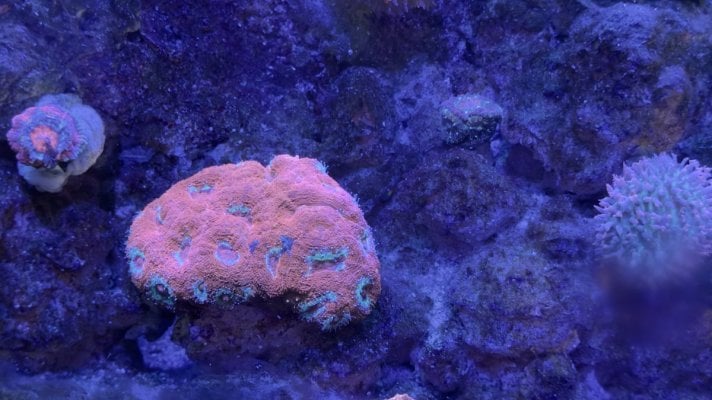Which Pods are best at algae control!
You can find thread after thread about fighting the dreaded nuisance algae. Every thread has a pretty common theme, nutrient control. There are so many methods for this, but most come down to a central theme. This theme is the reduction of the amount of organic material going to waste in our rocks and substrate. Better filters, cleaning and rinsing sand, extra equipment to develop denitrifying bacteria, and various additives such as NoPox. While I have and continue to utilize some of the before mentioned methods, an alternative or additional method is the introduction of a clean-up crew. Pods can play an intrinsic part in any clean-up crew. Reaching areas that other members such as crabs, Hermits, and snails cannot reach. These power house micro clean-up crews can help you achieve visible results and cleaner water starting with their introduction.
How do they accomplish these wondrous claims? Copepods are largely omnivorous, and convenience eaters, but most readily available species prefer and will eat algae either nuisance or provided Phytoplankton micro algae. Due to their size, copepods and amphipods can get into the smallest openings eliminating the algae clear down to the roots. An aquarist will get the greatest results from benthic (crawlers) pods, as they spend their life on and in the rocks and substrate. Tigriopus are touted as expert foragers, which they are, but unfortunately they get preyed upon due to their tendency to stay out in the open. Apocyclops and Tisbe pods are super heroes in this process, partially due to their smaller size combined with their propensity to rapidly populate. Our Harpa pod, closely related to the Tisbe is one of our offerings that I consider to be the premier combatant in these fights. They even keep their culturing vessels cleaner than all the rest.
Along with the copepods, amphipods are algae eating dynamos and do an outstanding job battling GHA. Introducing them at the first sign of GHA or better before it even starts is a great way to preemptively prepare for what is to come. Yes not all aquariums are plagued with algae issues but it seems like a majority are. With reasonable water parameters, doesn’t have to be pristine, amphipods will readily reproduce in the aquarium. How well they reproduce will be affected by the number and type of fish in the aquarium as well. In an ever changing hobby, new methods, equipment, and additives, I find it reassuring that some of the old tried and true methods continue to show awesome results.
Moving slow and paying attention to detail goes a long way in this hobby. Establishing a strong and varied biome is one of the first steps in a long and rewarding adventure. You can check out our site www.reefbysteele.com, and we are always willing to work one on one to help you make the right selections for your tank.
You can find thread after thread about fighting the dreaded nuisance algae. Every thread has a pretty common theme, nutrient control. There are so many methods for this, but most come down to a central theme. This theme is the reduction of the amount of organic material going to waste in our rocks and substrate. Better filters, cleaning and rinsing sand, extra equipment to develop denitrifying bacteria, and various additives such as NoPox. While I have and continue to utilize some of the before mentioned methods, an alternative or additional method is the introduction of a clean-up crew. Pods can play an intrinsic part in any clean-up crew. Reaching areas that other members such as crabs, Hermits, and snails cannot reach. These power house micro clean-up crews can help you achieve visible results and cleaner water starting with their introduction.
How do they accomplish these wondrous claims? Copepods are largely omnivorous, and convenience eaters, but most readily available species prefer and will eat algae either nuisance or provided Phytoplankton micro algae. Due to their size, copepods and amphipods can get into the smallest openings eliminating the algae clear down to the roots. An aquarist will get the greatest results from benthic (crawlers) pods, as they spend their life on and in the rocks and substrate. Tigriopus are touted as expert foragers, which they are, but unfortunately they get preyed upon due to their tendency to stay out in the open. Apocyclops and Tisbe pods are super heroes in this process, partially due to their smaller size combined with their propensity to rapidly populate. Our Harpa pod, closely related to the Tisbe is one of our offerings that I consider to be the premier combatant in these fights. They even keep their culturing vessels cleaner than all the rest.
Along with the copepods, amphipods are algae eating dynamos and do an outstanding job battling GHA. Introducing them at the first sign of GHA or better before it even starts is a great way to preemptively prepare for what is to come. Yes not all aquariums are plagued with algae issues but it seems like a majority are. With reasonable water parameters, doesn’t have to be pristine, amphipods will readily reproduce in the aquarium. How well they reproduce will be affected by the number and type of fish in the aquarium as well. In an ever changing hobby, new methods, equipment, and additives, I find it reassuring that some of the old tried and true methods continue to show awesome results.
Moving slow and paying attention to detail goes a long way in this hobby. Establishing a strong and varied biome is one of the first steps in a long and rewarding adventure. You can check out our site www.reefbysteele.com, and we are always willing to work one on one to help you make the right selections for your tank.




















